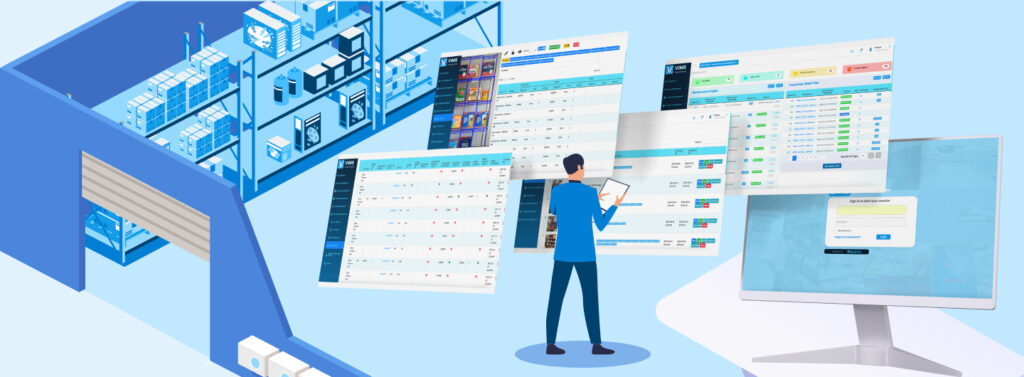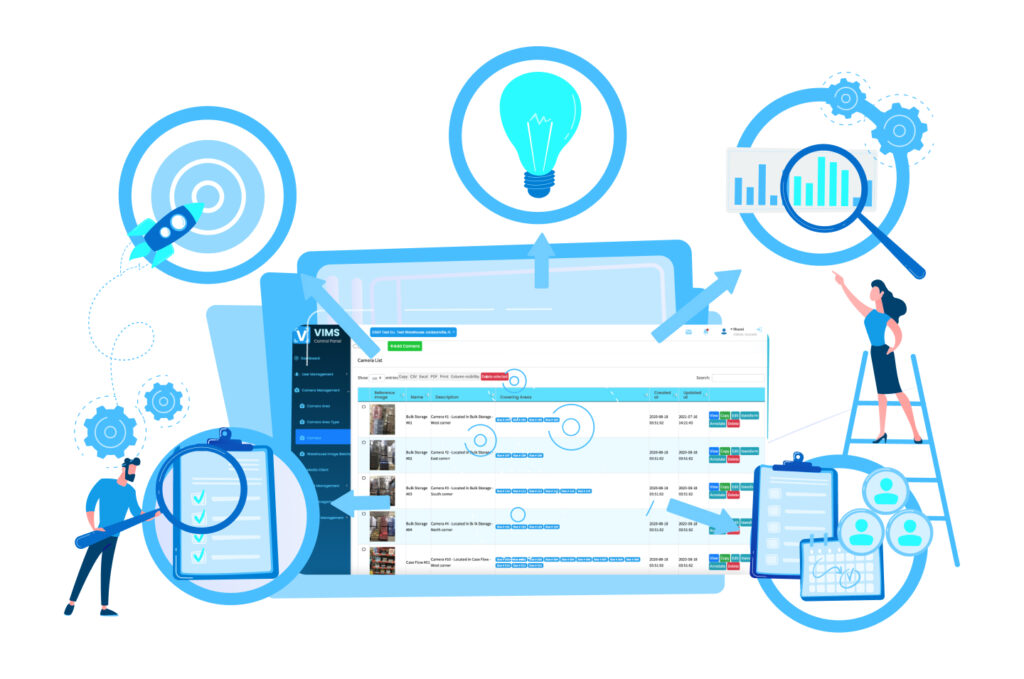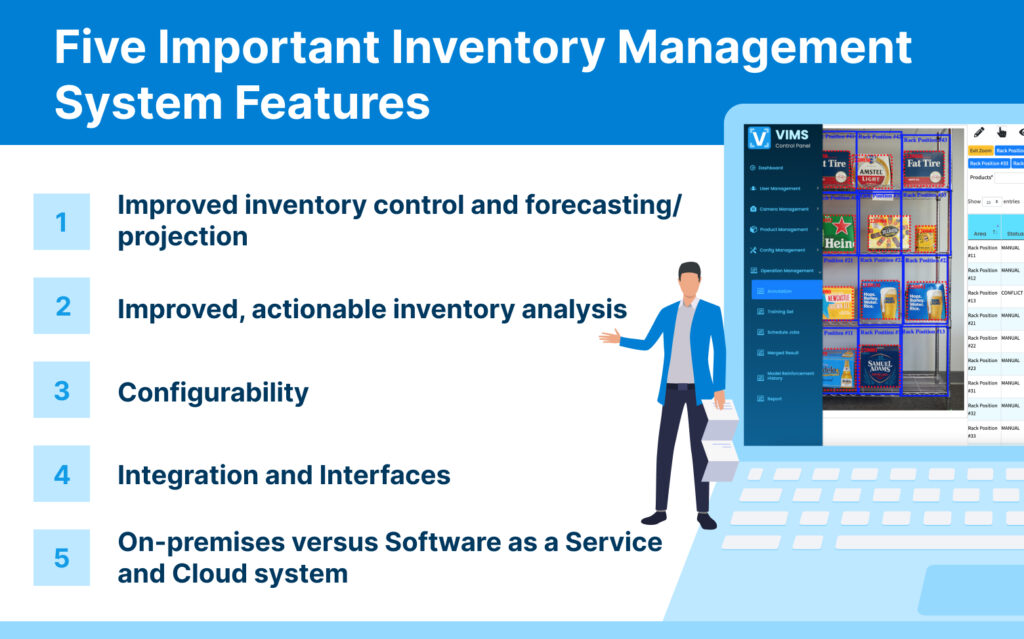
Many businesses moved from inventory management systems solely maintaining records and reporting on inventory to more strategic inventory requirements to plan, project and fill customer orders and improve profitability. With all of the options available today, how do you know which solution will work best for you and your business? And what features should you be looking for?
Inventory management systems support the activities of purchasing product, analyzing sales trends and on-hand inventory availability, as well as liquidation of product for wholesale, distributors, ecommerce retail and manufacturing companies. Managing inventory is a critical component to Supply Chain Management.
For manufacturers, wholesalers, and distributors, the purchasing department is responsible for acquiring the new product and reordering existing products. In retailers and e-commerce companies, the purchase and reorder of inventory is done by merchants (buyers) or inventory control personnel.

Selecting the Right Inventory Management System is a Strategic Choice
When you search for inventory management systems online, literally hundreds of commercially available systems populate in your results. A general search may return all sorts of specialized inventory systems which may not fit your business. Examples of potentially unnecessary software include those made for manufacturing raw materials and work-in-process inventory; maintaining WMS’ inventory systems; forecasting and planning requiring an inventory control system as a standalone system; and standalone systems implemented for websites or retail point of sale.
Understanding a system’s legacy and the company’s installed base of users is very key to selecting the right system for your business. Is the software tailored to meet the needs of manufacturing, wholesale and distribution, retail, ecommerce, or direct marketing? The application design and strengths are very different across these industries.
As a business becomes more retail or Internet based, their inventory control methods must adjust accordingly. Instead of controlling inventory as “back office application” recording on-hand and vendor on order sales to a customer facing application. A customer facing inventory control system will likely provide SKU availability, by location and delivery dates, to websites, DCs, and retail stores to fill customer orders. Make sure you are asking key questions about inventory control during your system search and Request For Proposal (RFP) preparation.
Five Important Inventory Management System Features

Based on our 25+ years of logistics experience in many different industries and product categories, here are the top six most important inventory management features that you should look for when selecting a system:
- Improved inventory control and forecasting/projection
As simple as this sounds, this should top your list. How should this new system assist in managing and controlling inventory? Here are a few key questions to get you thinking about major features and functions:
- How robust is the SKU item master file? This is a good place to start the review of systems. What data is available by SKU, such as product costing methods and product characteristics?
- Does the system project or forecast demand for an SKU? As in, will the system calculate the quantity of a product required forward over a time horizon? A critical function is to calculate when a product will “stock out” based on selling plans, rate of sale, and project demand forward based on these rates of sale and using the vendor lead time. Is history by item available for multi-years?
- Will the system provide a channel view of your multichannel business, such as a wholesale or ecommerce company? Does the system provide sales, customer demand (orders), and dedicated stock by channel for promotional events and products, including catalogs, web promotions, retail sales, and clearance sales?
- How streamlined are the analysis and purchasing functions for placing purchase orders? How are purchasing budgets supported? If you’re retail, does the system support sales and stock planning and retail Open-To-Buy system?
2. Improved, actionable inventory analysis
As we said earlier, there are literally hundreds to thousands of data elements in inventory management systems. What “out of the box” inventory management analyses are offered and do they fit your method of managing inventory? What are the key metrics that management can use to measure inventory, such as inventory turnover by product/SKU or gross margin return on investment (GMROI)?
The second point is how actionable is the data? Given the sheer number of products and SKUs many companies have, merchandising and purchasing departments must find the time to address required actions while staying on top of their other responsibilities. If there are data dashboards, how actionable are they? Does the system point the purchasing agent or inventory manager to which products to take action on? For example, will the system flag potential stock outs; calculate recommended purchase orders; and candidates for overstock liquidation? If not, will you have to develop these management tools?
How well do the potential systems support the ad hoc research functions of merchants or purchasing functions? These features include having the data elements for primary and secondary vendors of a product; department and categorization of products; and being able to put merchant driven characteristics on product records as notes and in data analysis.
3. Configurability
This feature allows a single system to be set up and configured for two different business entities/companies so that each has a different “look and feel” or personality. In this way, the more comprehensive systems are successfully implemented across industries and merchandise without customization.
While all systems have configurability to some degree, what does it allow you to accomplish? Examples of configuration include:
- A product with different colors and sizes may be configured in a way to show total product sales and stock on-hand by style or base product, as well as SKU.
- A role (group of users) or individual configuration table of users that allows for the set-up of data security functions within your organization for updating and viewing data.
- Flexibility for controlling different types of hardware or interfaces connected to the inventory management system.
- Adoption of your detailed expense accounting structure.
- Integration and Interfaces
What are the key integrations and interfaces required f your project cannot get all key functionalities from a single source, such as an ERP or WMS system? Are there additional add-on systems required? What implementation expense is required? Here are a few considerations:
- Primary/secondary data relationship: In many system environments, Inventory Management Systems and Warehouse Management Systems (WMS) are two separate systems. They must be tightly coupled to remain in synch from a data and timing perspective. Many businesses found a solution by having the Inventory Management act as the “primary” inventory management system. In this model, the WMS acts as the “secondary” system, which is fed and controlled data from the inventory management system. Some vendors may offer both the inventory management and WMS in one application.
- Support customer facing or selling applications: As discussed earlier, what retail, point of sale, and website integrations are required?
- Other interfaces: These may include systems for planning, data analytics, and dimensional/weighing and interfaces for UPC product bar code and data. Interfacing to the corporate accounting systems is very important for financial reporting. An interface allows you to see data in terms of inventory costing method, such as average cost, layered FIFO cost, and retail method.
5. On-premises versus Software as a Service and Cloud system
For many companies, cloud-based and Software as a Service (SaaS) subscription made inventory management systems more affordable than on-premises implementations and supported systems because they are based on the number of users and data storage usage. Additionally, implementation can be accomplished in a shorter timeframe because they are a service requiring less IT time internally. The key question here is what is the right IT strategy for your company?
TEMPO, a leading process automation company, has developed a computer vision aided inventory management system that moulds itself to your needs. The machine learning enabled system learns inventory patterns and not only helps in managing inventory, but also offers data insights that are key to proactive decision-making process. The advanced cloud-based software is easy to configure as it uses existing hardware infrastructure and integrates seamlessly with your WMS environment. Speak to us today to learn more.


